American post-war anti-aircraft artillery. 2-Part I
Despite the fact that the US military has fallen interest in anti-aircraft artillery, the development of new anti-aircraft installations of medium and small caliber in the postwar period has not ceased. In 1948, the 75-mm M35 automatic turret-type anti-aircraft gun was created in the USA. The ammunition of this gun when firing was automatically replenished with a special loader. Because of this, the practical rate of fire was 45 rds / min, which was an excellent indicator for a towed anti-aircraft gun of this caliber. The appearance of automatic 75-mm anti-aircraft guns was due to the fact that during World War II there was a difficult range for anti-aircraft artillery from 1500 to 3000 m. Here, the planes were not very accessible for light anti-aircraft guns, and for heavy anti-aircraft guns this height was too small. In order to solve the problem, it seemed natural to create anti-aircraft guns of some intermediate caliber.
Due to the fact that reactive combat aviation in the post-war period, it developed at a very rapid pace, the army command put forward the demand that the new anti-aircraft gun mount be able to deal with airplanes flying at a speed of 1600 km / h at an altitude of up to 6 km. However, to withstand such stringent requirements was unrealistic, and the maximum speed of the effectively fired target was subsequently limited to 1100 km / h. It is clear that manual data input about target parameters at a speed close to sound would be absolutely inefficient, therefore, in the new anti-aircraft installation, a combination of search and guidance radar with an analog computer was used. All this rather cumbersome economy combined with the artillery unit. The T-38 radar with a parabolic antenna was mounted in the upper left part of the gun mount. Guidance was carried out by electric drives. The gun had an automatic installer of remote fuses, which significantly increased the effectiveness of firing. Tests conducted in 1951-1952 demonstrated the operability of guidance equipment and the ability to detect and track air targets at ranges up to 30 km. The maximum firing range reached 13 km, and effective was 6 km.
In March, the 1953 of the year, the 75-mm automatic radar-guided anti-aircraft gun, known as M51 Skysweeper, began to enter the ground forces anti-aircraft units. These gun mounts were located at stationary positions along with 90 and 120-mm anti-aircraft guns. The translation of the M51 into a combat situation was quite troublesome. In the stowed position, the anti-aircraft gun was transported on a four-wheeled carriage, on arrival at the firing position it fell to the ground and rested on four cross-shaped supports. To achieve combat readiness, it was necessary to connect power cables and warm up the guidance equipment.
At the time of the appearance of the 75-mm gun mount M51 in its caliber had no equal in range, firing rate and accuracy of fire. At the same time, complex and expensive hardware required skilled maintenance, was quite sensitive to mechanical stress and meteorological factors, and mobility did not meet modern requirements. In the second half of the 50-x, anti-aircraft missiles began to create fierce competition for anti-aircraft guns, and therefore the service of the 75-mm anti-aircraft guns, coupled with guidance radars, in the US military was not long. Already in 1959, all anti-aircraft battalions, armed with 75-mm guns, were deactivated, but story installations M51 this is not over. As usual, not necessary to the American army weapon It was transferred to the allies. In Japan and in a number of European countries, 75-mm anti-aircraft guns served at least until the start of the 70-x.
In 1956, testing of the T249 Vigilante began. This self-propelled self-propelled gun was intended to replace the 40-mm towed automatic machines Bofors and ZSU М42. Armed with an 37-mm rapid-fire six-barreled cannon (3000 rds / min) with a rotating block of T250 barrels, the Vigilant ZSU, unlike Daxter, with its 40-mm Bofors hopper with cassette loader, had a radar for detecting air targets. The base was the elongated chassis of the M113 armored personnel carrier.
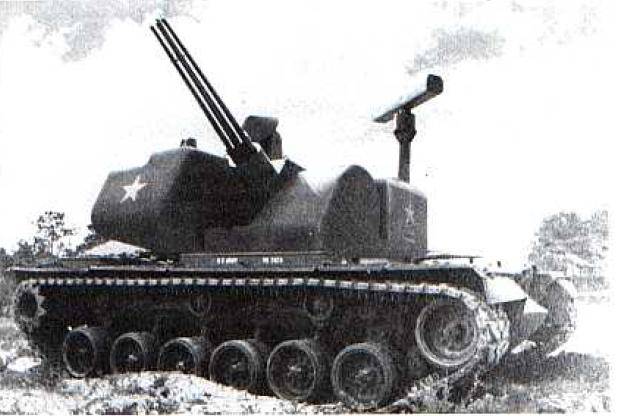
However, in the late 50s, the US military, fascinated by anti-aircraft missiles, did not show much interest in the new anti-aircraft artillery installation, considering that the air defense systems based on guns were outdated, and canceled further funding for the T249 in favor of the MIM-46 Mowler short-range air defense system , which, however, for a number of reasons did not enter service. Later, in the mid-70s, the Sperry Rand development company attempted to revive this project by installing a six-barreled anti-aircraft machine converted to a 35-mm projectile (NATO 35x228 mm) in an aluminum tower on the chassis tank M48. But this option was not successful, having lost the competition ZSU M247 "Sergeant York."
The experience of combat operations gained in large-scale armed conflicts in Southeast Asia and the Middle East demonstrated that it is too early to discard small-caliber rapid-fire anti-aircraft guns, since anti-aircraft missile systems are not always able to cover their troops from attack aircraft operating on small heights. In addition, anti-aircraft artillery installations with significant ammunition are much cheaper than air defense systems, they are less susceptible to organized interference and, if necessary, are capable of firing at ground targets.
In the middle of 1960's, General Electric, together with the Rock Island Arsenal, created two models of anti-aircraft systems to meet the needs of the US Army. In both, the same 20-mm six-barreled gun was used, which is the development of the Aviation Series M61.
The towed unit, designated the M167, was to replace the 12,7-mm ЗПУ NXXX in the troops. This anti-aircraft gun was intended primarily for airborne and airborne units. For example, the 55 Airborne Division, stationed at Fort Bragg in 82-70, had an anti-aircraft division consisting of a headquarters and four batteries. Each battery, in turn, consists of a headquarters and three fire platoons with 80 M4 installations in each.
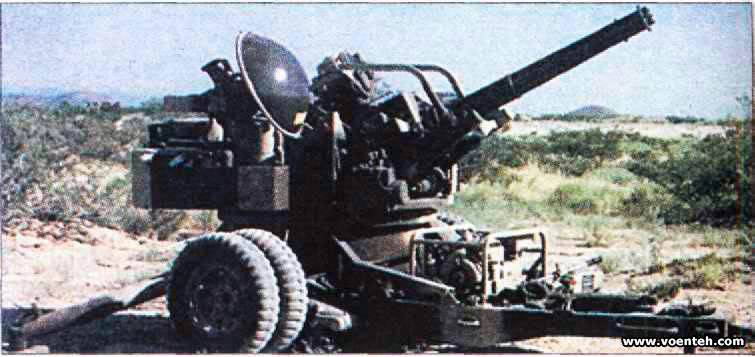
The six-barrel 20-mm gun "Volcano" with a belt power system, an electrically operated turret and a fire control system mounted on a two-wheeled towed carriage. According to its concept, the M167 charger corresponds to the 12,7-mm towed installation M55. Aiming an antiaircraft gun at the target and the rotation of the barrel assembly during firing is also carried out by electric drives powered from batteries. To charge the battery is a gasoline unit, located in the front of the vehicle. The fire control system M167 consists of a radio range finder, located to the right of the gun, and a gyro sight with a counter-resolver. Ammunition - 500 shells. For firing, shots with fragmentation-incendiary and armor-piercing tracer shells weighing 0,2 kg and initial velocity 1250 m / s are used. The maximum range of shooting - 6 km, when shooting at aerial targets flying at speeds of 300 m / s - 2 km. Field shooting has repeatedly demonstrated that the highest probability of hitting a target is achieved at a distance of up to 1500 m. The M167 can be towed by a light-duty truck M715 (4x4) or a multi-purpose off-road vehicle M998, and also be transported on an external suspension by helicopter. The weight in the combat position is 1570 kg, the calculation is 4 person.
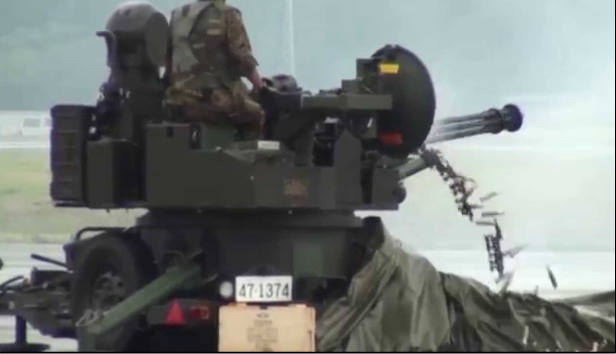
Anti-aircraft guns can fire with tempo: 1000 and 3000 shots / min. The first is usually used for firing at ground targets, the second at air targets. You can choose a fixed queue length: 10, 30, 60 or 100 shells. At the moment, towed units M167 are not used by the US armed forces, but are still available in the armies of other states.
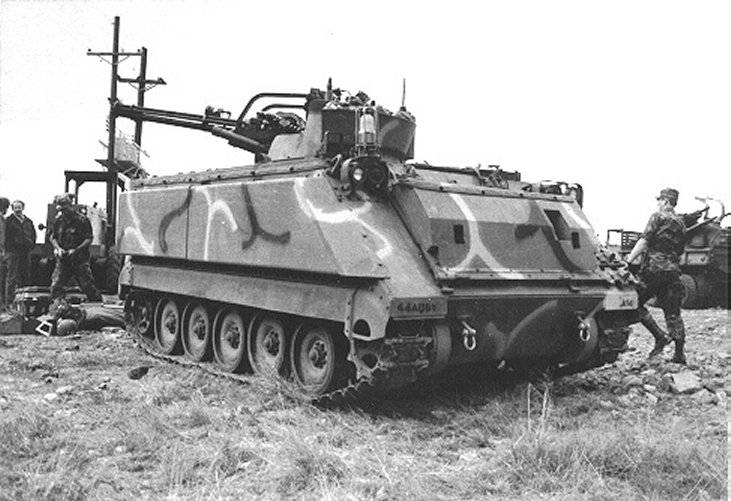
Self-propelled version of the installation received the designation M163, this ZSU created on the basis of a tracked BTR M113A1. In connection with the increased weight of the machine, additional panels are installed on the upper front sheet and sides, increasing the buoyancy of the machine. Like the base M113 armored personnel carrier, the ZNX M163 could swim across water obstacles by swimming. Movement on the water was carried out by rewinding the tracks. On roads with hard surfaces ZSU, weighing 12,5 t, could accelerate to 67 km / h. In terms of its firing characteristics, the self-propelled version is identical to the towed unit, but due to the significant internal volumes of the armored personnel carrier, the ammunition unit has been increased several times and makes 1180 shots directly ready for firing, and 1100 in stock. Aluminum hull armor with a thickness of 12-38 mm provides protection against bullets and shrapnel, but the gunner is protected only by an armored “hood” from the rear hemisphere.
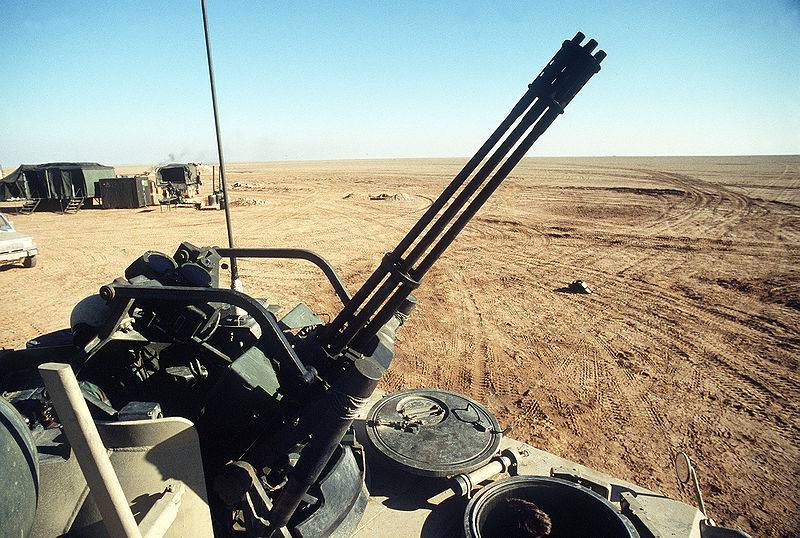
The rotation of the turret and the aiming of the gun in a vertical plane in the range of angles from -5 ° to + 80 ° is carried out with the help of high-speed electric drives. In case of their failure, there are manual guidance mechanisms. The radar range AN / VPS-2 with a range of up to 5 km and accuracy of measurement ± 10 m is installed on the right of the tower. When working according to target designation data taken over the air, the target is detected visually and is captured to track with an optical sight, which focuses the radio-range antenna on it . Targeting is usually carried out from the radar detection of low-flying targets AN / MPQ-49, which was part of the mixed anti-aircraft divisions "Chaparel-Vulcan".
However, at the end of 70-x ZSU M163 no longer fully complied with modern requirements. Anti-aircraft guns were criticized due to the small effective firing range and the lack of detection of air targets on the radar machine. In the second half of the 80-s, a significant part of the Vulkan installations, both self-propelled and towed, underwent upgrades under the PIVADS program. After upgrading the fire control system, the radio range finder was able not only to determine the distance to the target, but also to automatically track it in range and angular coordinates. In addition, the gunner received a helmet-mounted sighting device, with which the radar antenna was automatically focused on the observed target for subsequent tracking. Thanks to the introduction of new armor-piercing shells with a separating pallet into ammunition, the range of fire at air targets increased to 2600 m.
In the United States, the Zapu M163, along with the MIM-72 SAMs Chaparrel, were in service with anti-aircraft divisions of mixed composition. In 70-ies, the Chaparel-Vulkan airfield was an important link in the air defense system of the army corps and was the main means of fighting low-flying targets. The M163 batch production was carried out by General Electric since 1967, the 671 ZSU of this type was produced in total. They were in service with the US Army anti-aircraft units until the end of the 90-s. After that, the Chaparel-Vulkan system was replaced by the M1097 “Evanger” air defense system, which uses the FIM-92 “Stinger” SAM.
The short range of effective fire 20-mm towed and self-propelled anti-aircraft installations, the impossibility of all-weather use, the absence of an armored turret and target detection radar caused the US Army to launch a divisional defense anti-aircraft installation in the middle of the 70-s. level The emergence of this program is due to the fact that the US military was seriously concerned about the increased capabilities of the Soviet fighter-bombers and front-line bombers capable of operating effectively at low altitudes, where anti-aircraft missiles were ineffective. In addition, combat helicopters Mi-24, armed with anti-tank missiles with a launch range exceeding the effective range of the Vulcan anti-aircraft guns, appeared in the USSR. After the start of deliveries to the troops of the M1 Abrams and the Bradley BMP M2, the American military faced the fact that the ZNU M163 and the MIM-72 Chaparrel simply did not have time for new vehicles and could not provide anti-aircraft protection. Evidence that modern ZSU can be a serious threat to military aviation, was the experience of battles in the Middle East. Israeli pilots, trying to avoid the defeat of anti-aircraft missiles, went to low-altitude flights, and at the same time suffered significant losses from the ZSU-23-4 Shilka.
Five ZSU armed with anti-aircraft machine guns caliber 30-40 mm took part in the competition DIVAD. They all had radar detection and tracking. In May 1981, the winner was the installation of Ford Aerospace & Communications Corporation. ZSU received the official name of "Sergeant York" (in honor of Sergeant Alvin York, the hero of the First World War) and the M247 index. The contract worth $ 5 billion provided for the supply of 618 ZSU for 5 years.
The new anti-aircraft self-propelled gun turned out to be not easy, its weight in the combat position was 54,4 T. The base for the MNNXX anti-aircraft installation was the chassis of the M247-48 tank. In 5's, the M80 tanks were already considered obsolete, but a significant number of M48A48 tanks were available at the storage bases. Using the chassis of these tanks was supposed to reduce the cost of production ZSU. A turret with two 5-mm anti-aircraft guns was mounted in the center of the hull. On the roof of the tower there are two radar antennas: on the left is a round-shaped tracking radar antenna, and a flat target radar antenna at the back. The detection radar was a modified AN / APG-40 station used on the F-66A / B fighter aircraft. Both antennas could be folded to reduce the height of the ZSU on the march. The crew of the car - three people. The gunner is located on the left side of the tower, and the commander is on the right, each seat is equipped with a separate hatch. The gunner has a sight with a laser rangefinder, the commander’s place is equipped with a panoramic observation device. The guidance system is fully automatic, without the possibility of mechanical control. 16-mm twin guns have electric vertical guidance, the turret rotates 40 °. Each gun is equipped with a separate magazine, ammunition is 360 projectile.
The 40-mm guns used in the M247 had serious differences from the Bofors X-NUMX-mm anti-aircraft guns previously used in the US military. Armament ZSU consisted of two automatic guns L40 Swedish development, which were specially modified for ZSU. The L70 cannon uses 70 × 40 mm R high-power shots with an initial speed 364 kg of projectile - 0.96 – 1000 m / s, survivability of the 1025 barrel shots. When creating the L4000, priority was given not to the rate of fire, but to the high accuracy of firing in short bursts. Technical rate of fire per gun - 70 rds / min. The range of destruction of air targets - 240 m.
Despite winning the competition, the adoption of the ZNU M247 into service caused a storm of criticism. It was pointed out that the machine needs to be refined, the radio-electronic complex is not functioning reliably, and the combat effectiveness is questionable. An indirect recognition of this can be considered the intention of the developer to install on the turret as an additional weapon of the FIM-92 “Stinger” SAM. In addition, the outdated M48А5 chassis could not keep up with the new tanks and infantry fighting vehicles. All this was the reason for the closure of the production of the Sergeant York ZSU M247 in August 1985. Until then, the American industry managed to build 50 machines. Due to the numerous shortcomings, the army refused them, and most of the M247 was used at the air test sites as targets. At present, there are four copies of the ZSU in the museums.
After the epic with the DIVAD program, the American army no longer attempted to use anti-aircraft artillery systems. Moreover, significant reductions in the 90-e years were subjected to anti-aircraft missile units. The US military abandoned the Hawk 21 air defense system, which was heavily invested in upgrading. As already mentioned, the mixed Chaparrel-Vulcan anti-aircraft divisions were replaced with M1097 “Evanjer” air defense systems on the M988 “Hummer” chassis, which, of course, cannot be considered a full-fledged replacement, since the Hummers are seriously inferior to the tracked vehicle. However, recently the US Army has cooled off to anti-aircraft systems. LAW Patriot PAC-3 do not carry combat duty in the United States. In Germany, the American contingent has only four Patriot batteries, which also do not have constant readiness. Anti-aircraft systems are deployed only in potentially missile-dangerous regions to protect American bases from North Korean, Iranian and Syrian ballistic missiles. Ensuring air defense from the enemy's strike aircraft in the theater of operations is assigned primarily to US Air Force fighters.
Based on:
http://zonwar.ru/index.html
http://russian-tanks.com
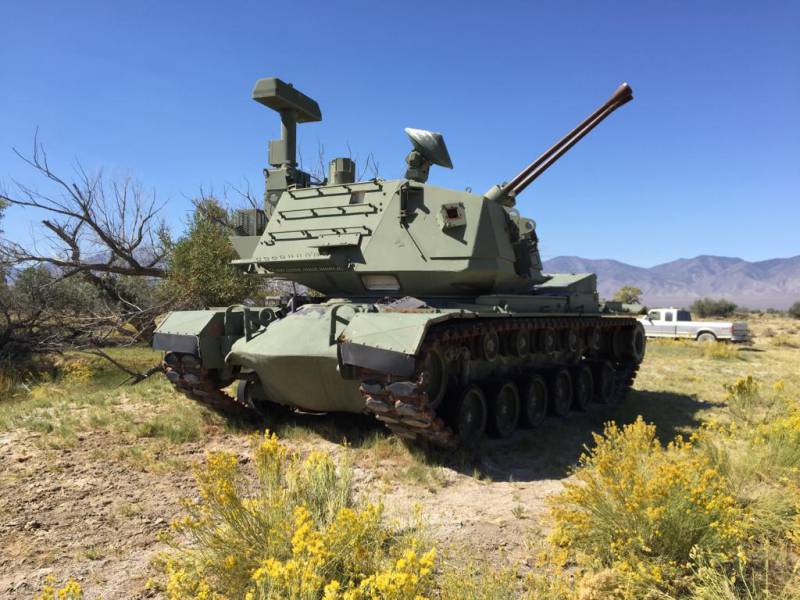
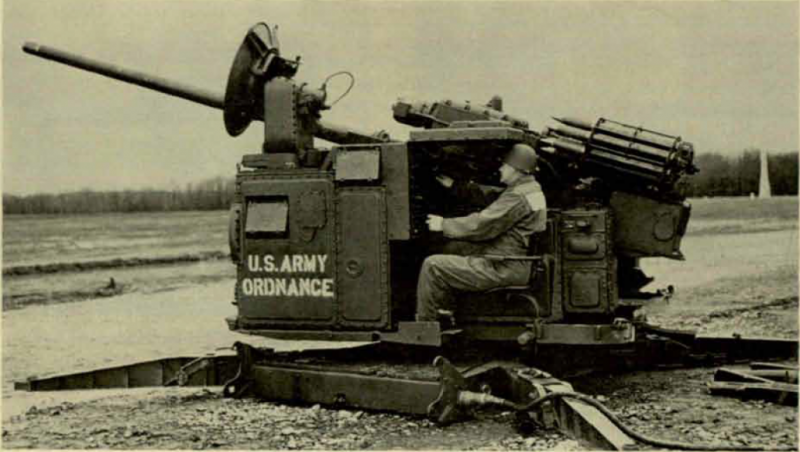
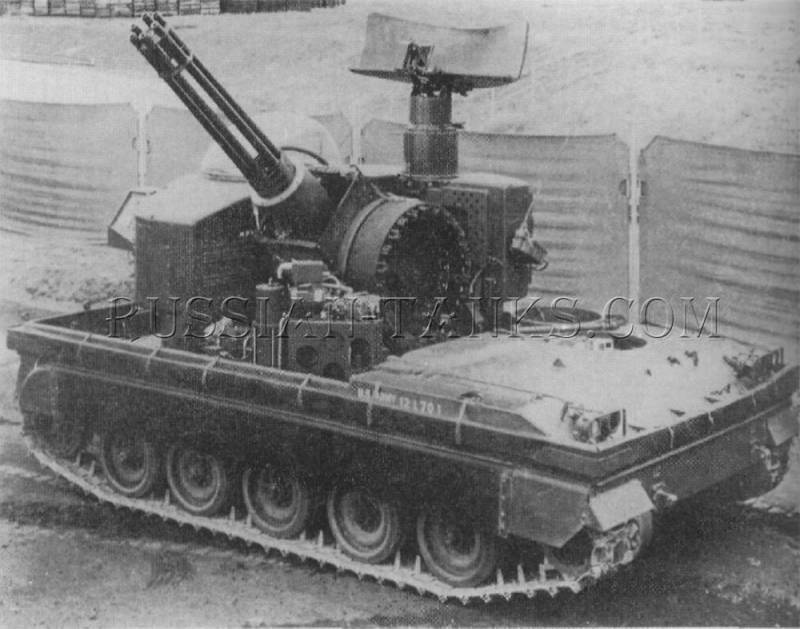
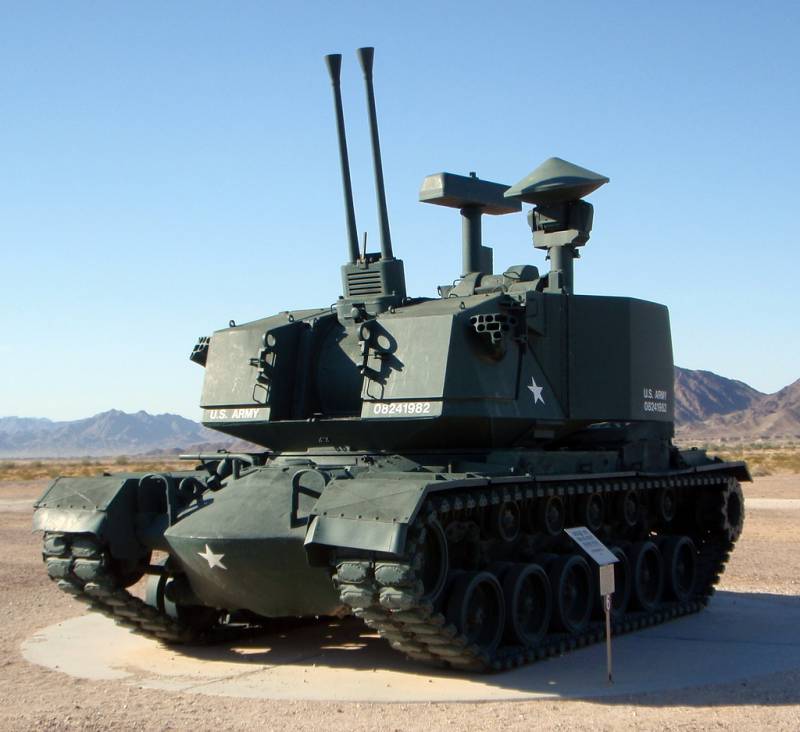
Information